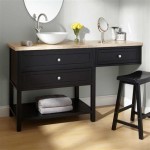How Much Does It Cost To Turn A Small Bedroom Into a Bathroom?
Transforming a small bedroom into a bathroom is a significant home renovation project that can add value and convenience to a property. However, understanding the costs involved is crucial for budgeting and planning. The final price tag for this type of conversion can vary widely depending on numerous factors, from the complexity of the plumbing to the choice of finishes. This article outlines the various cost components and considerations involved in converting a small bedroom into a functional and aesthetically pleasing bathroom.
The primary driver of cost in this undertaking is typically the plumbing work. Adding or relocating water supply lines and drainage pipes can be a complex and expensive process, especially if the new bathroom is located far from existing plumbing infrastructure. The location of existing plumbing within the house heavily influences the overall cost. Bathrooms located adjacent to existing plumbing lines, such as those near the kitchen or another bathroom, will generally be less expensive to plumb. Conversely, if the new bathroom is located on the opposite side of the house or on a different floor from existing plumbing, the project will require more extensive and costly plumbing work.
Material choices also play a significant role in the final cost. Fixtures like toilets, sinks, showers, and bathtubs come in a wide range of styles and prices. High-end brands and premium features can significantly increase the cost. Similarly, the choice of flooring, tiles, and vanity materials will impact the overall budget. Budget-friendly options, such as laminate flooring and basic tile, can help keep costs down, while more luxurious choices, like natural stone or custom-built vanities, will significantly increase expenses.
Labor costs represent another substantial portion of the total expense. Hiring qualified and licensed professionals, including plumbers, electricians, and general contractors, is essential for ensuring the project is completed safely and to code. Labor rates vary depending on location, experience, and the scope of the work. Obtaining multiple quotes from different contractors is advisable to compare prices and ensure competitive bidding. Furthermore, the complexity of the design and the extent of the renovation work will influence the number of labor hours required.
Key Point 1: Plumbing Costs and Considerations
The heart of any bathroom conversion lies in its plumbing system. The cost of plumbing depends largely on the proximity of the new bathroom to existing plumbing lines. If the bedroom is directly above or adjacent to an existing bathroom or the kitchen, the plumbing costs are likely to be lower because accessing water and drain lines will be easier. However, if the bedroom is located far from existing plumbing, running new lines can involve significant demolition, potentially requiring cutting through walls, floors, and ceilings.
The type of plumbing material used also affects the cost. Copper piping, while durable, tends to be more expensive than PEX (cross-linked polyethylene) piping, which is more flexible and easier to install. The labor costs associated with plumbing installation can also vary depending on the complexity of the job and the plumber's hourly rate. It's important to obtain detailed quotes from multiple licensed plumbers that itemize the costs of materials and labor.
Furthermore, the existing plumbing infrastructure may need to be upgraded to handle the increased water demand. This may involve replacing pipes with a larger diameter or upgrading the water heater. Failing to address these potential issues can lead to low water pressure or inadequate hot water supply in the new bathroom and potentially elsewhere in the house.
Drainage is another critical aspect of the plumbing system. Proper drainage is essential to prevent clogs and backups. The slope of the drain lines must be adequate to ensure proper water flow. Installing a toilet also requires careful planning to ensure it is properly vented to prevent sewer gases from entering the house. Improper ventilation can lead to unpleasant odors and potentially hazardous conditions.
Finally, local building codes and regulations must be adhered to when installing plumbing. This may involve obtaining permits and inspections to ensure the plumbing meets safety standards. Failing to comply with building codes can result in fines and delays in the project.
Key Point 2: Material Costs and Selection
Material costs encompass a wide range of items, including fixtures, flooring, tiles, vanities, countertops, lighting, and accessories. The choices made in each of these categories can significantly impact the overall cost of the bathroom conversion.
Fixtures represent a significant portion of the material budget. Toilets range from basic models to high-end, water-efficient options with features like heated seats and automatic flushing. Sinks can be pedestal sinks, vessel sinks, undermount sinks, or integrated sinks, each with its own price point. Showers and bathtubs also come in a variety of styles and materials, from standard acrylic tubs to luxurious whirlpool tubs and custom-tiled showers.
Flooring and tile choices also have a significant impact on the material budget. Ceramic and porcelain tile are popular choices for bathrooms due to their durability and water resistance. However, natural stone tile, such as marble or granite, can add a touch of luxury but comes at a higher cost. Vinyl flooring is a more budget-friendly option that is also water-resistant and easy to maintain. It's important to consider not only the cost of the flooring material itself but also the cost of installation, which can vary depending on the complexity of the pattern and the size of the tiles.
Vanities and countertops provide storage and a focal point for the bathroom. Stock vanities are generally more affordable than custom-built vanities. Countertop materials range from laminate to granite, quartz, and marble, each with its own price point and aesthetic appeal. The size and style of the vanity and countertop will also influence the cost.
Lighting is crucial for creating a functional and inviting bathroom. Recessed lighting, vanity lighting, and accent lighting can all contribute to the overall ambiance. LED lighting is a popular choice due to its energy efficiency and long lifespan. The cost of lighting fixtures and installation can vary depending on the complexity of the wiring and the number of fixtures installed.
Finally, accessories such as towel bars, toilet paper holders, mirrors, and shower curtains or doors should be factored into the material budget. These items can range from basic, inexpensive options to high-end designer pieces.
Key Point 3: Labor Costs and Hiring Professionals
Labor costs can account for a significant portion of the total cost of converting a bedroom into a bathroom. Hiring qualified and licensed professionals is essential for ensuring the project is completed safely and to code. The types of professionals typically involved in this type of project include plumbers, electricians, general contractors, carpenters, tile installers, and painters.
Plumbers are responsible for installing and connecting the water supply and drainage lines. Their hourly rates can vary depending on their experience and location. It's important to hire a licensed plumber who is familiar with local building codes and regulations.
Electricians are responsible for installing and wiring the electrical outlets, lighting fixtures, and exhaust fan. Electrical work can be dangerous, so it's crucial to hire a licensed electrician who is qualified to perform the work safely and to code.
A general contractor can oversee the entire project, coordinating the work of the different subcontractors and ensuring the project is completed on time and within budget. General contractors typically charge a percentage of the total project cost or an hourly rate.
Carpenters may be needed to frame walls, install doors and windows, and build custom vanities or shelves. Tile installers are responsible for installing the flooring and wall tiles. Painters are responsible for painting the walls and trim.
Obtaining multiple quotes from different contractors is advisable to compare prices and ensure competitive bidding. When evaluating bids, it's important to consider not only the price but also the contractor's experience, reputation, and references. It's also important to ensure the contractor is properly licensed and insured.
In addition to the hourly rates or project fees, labor costs can also be affected by the complexity of the design and the extent of the renovation work. More complex designs or extensive renovations will require more labor hours, resulting in higher labor costs. Unforeseen issues, such as hidden plumbing or electrical problems, can also add to the labor costs.
Before starting the project, it's important to have a clear contract with the contractor that outlines the scope of the work, the payment schedule, and the timeline for completion. The contract should also address any potential issues that may arise during the project.
Permit fees are another cost to consider. Depending on the location and the scope of the work, building permits may be required. Permit fees can vary depending on the size and complexity of the project. Failing to obtain the necessary permits can result in fines and delays in the project.
Demolition and disposal costs are also factors to consider. If the bedroom needs to be demolished to make way for the new bathroom, the cost of demolition and disposal of the debris should be factored into the budget. This may involve renting a dumpster and hiring a demolition crew.
Contingency funds are essential for any renovation project. Unexpected issues can arise during the project, such as hidden plumbing or electrical problems. It's advisable to set aside a contingency fund of 10-20% of the total project cost to cover any unforeseen expenses.
In summary, the cost of converting a small bedroom into a bathroom can vary significantly depending on a variety of factors. Careful planning, budgeting, and the selection of qualified professionals are essential for ensuring the project is completed successfully and within budget. By considering all of the cost components outlined in this article, homeowners can make informed decisions and avoid costly surprises.

Cost To Turn Closet Into Half Bath By Hiring A Professional Contractor

How Much Does Adding An En Suite Cost Bathroom Guru

Woman Transforms Spare Room Into Bathroom With 2 500 How She Did It Metro News

Cost To Add A Bathroom 2024 Guide Forbes Home

Small Bathroom Remodel 2024 Cost Guide Modernize

How Much Will Your Bathroom Renovation Really Cost The Truth

2024 Small Bathroom Remodel Cost Guide Angi

Small Bathroom Remodel 2024 Cost Guide Modernize

How Much Does A New Bathroom Cost In 2024 Victoriaplum Com

2024 Bathroom Remodel Cost Average Renovation Redo Estimator
Related Posts







